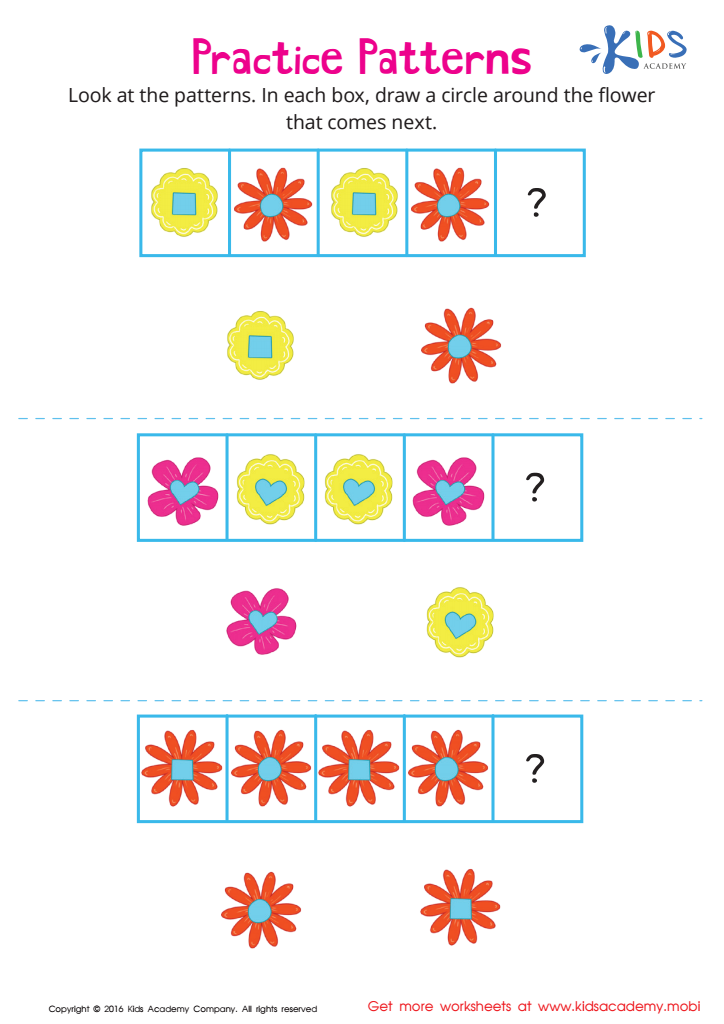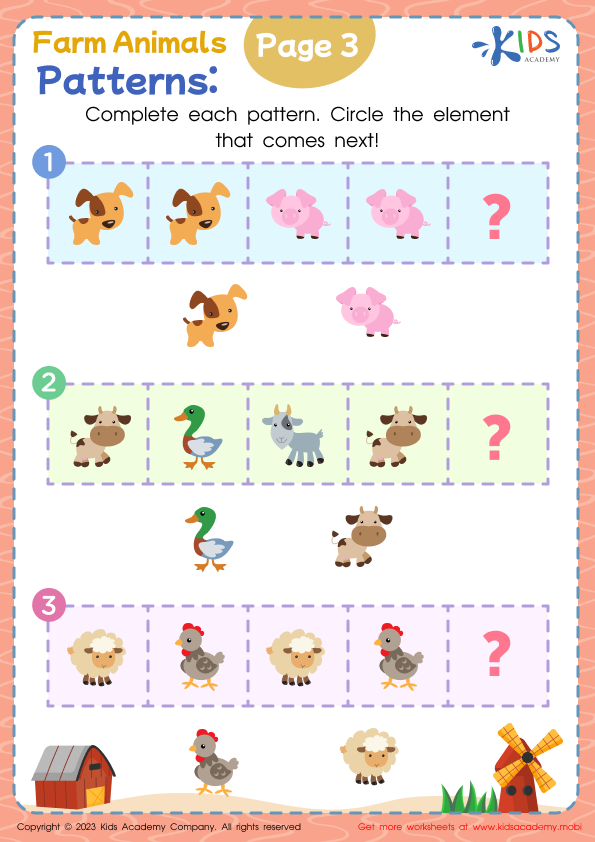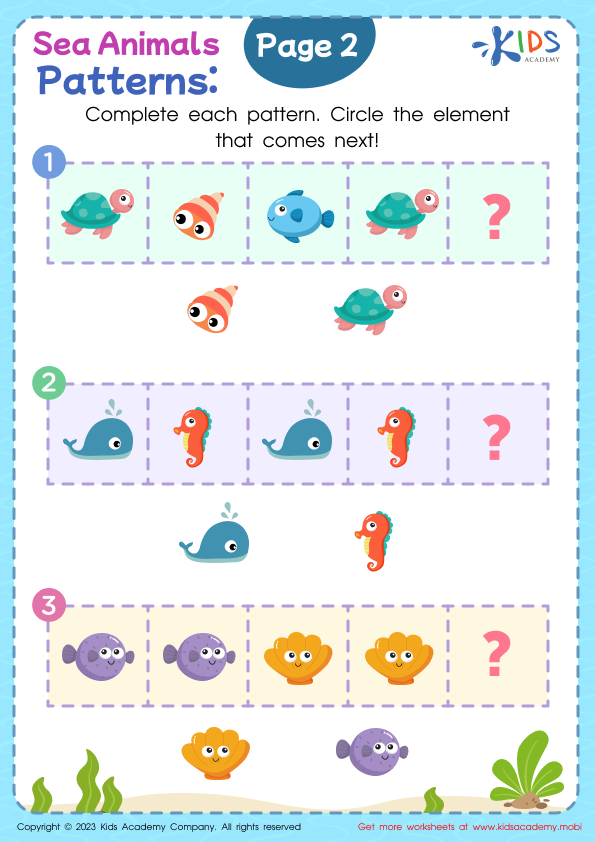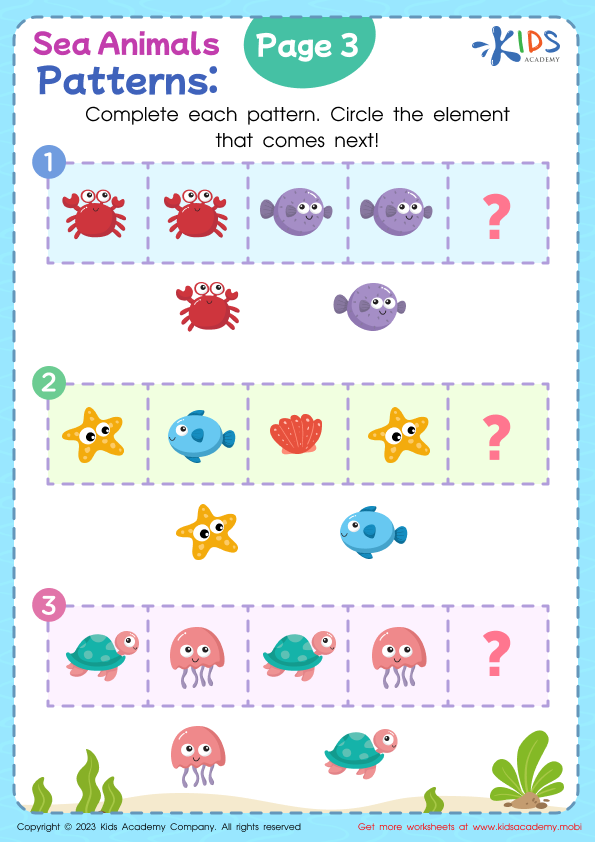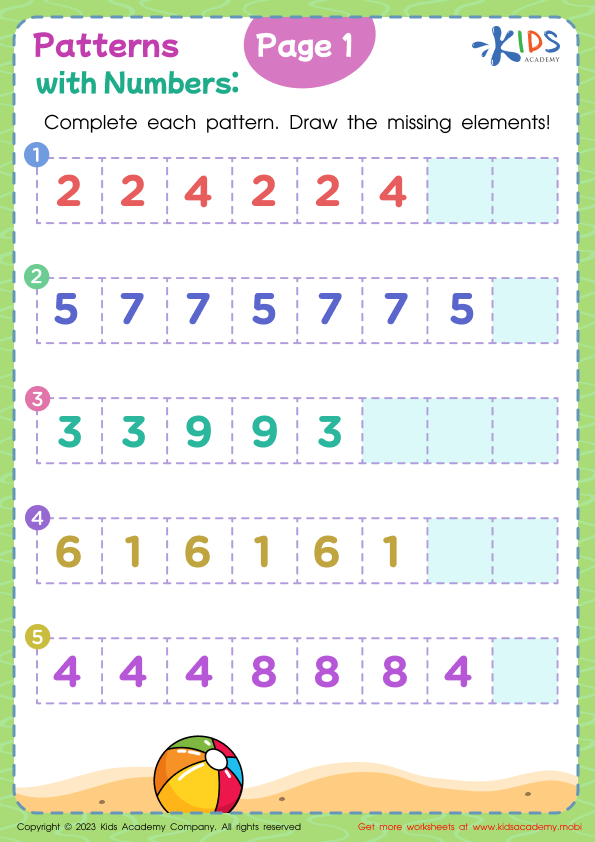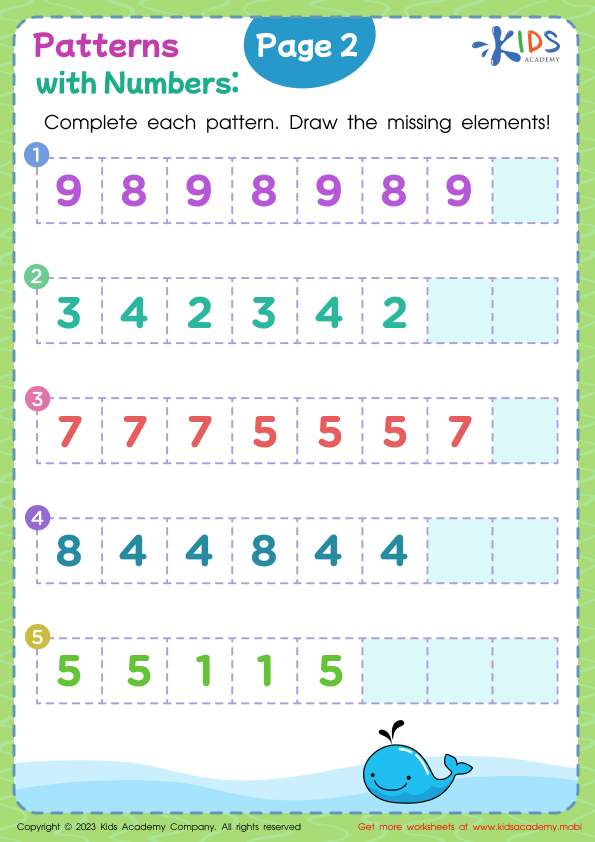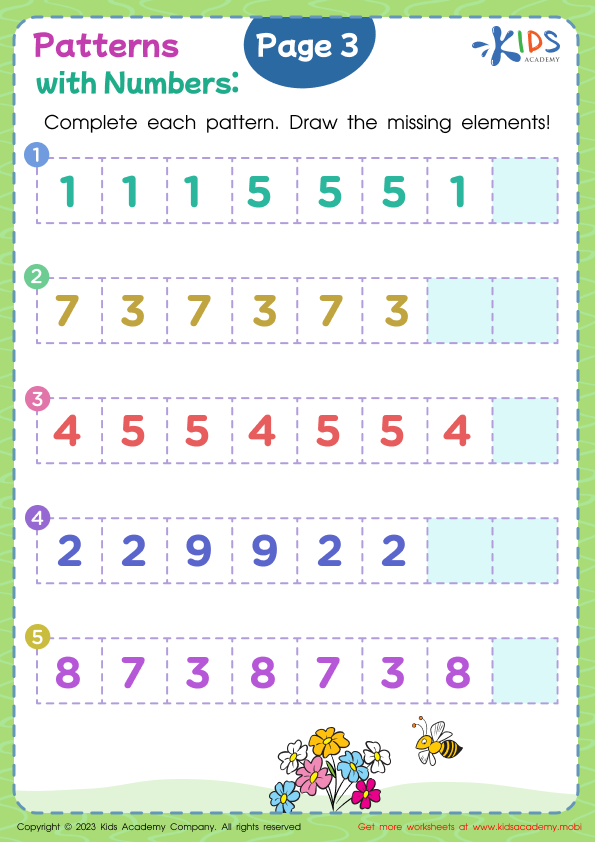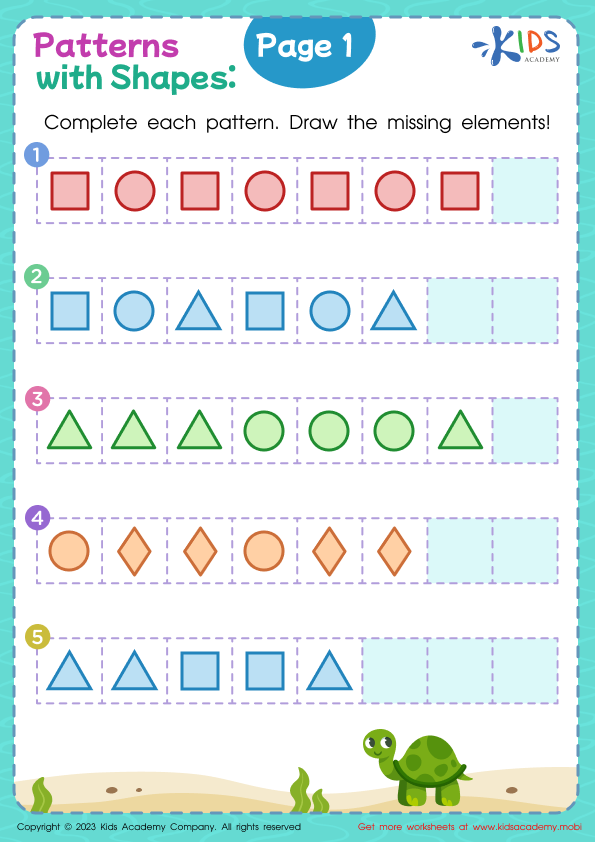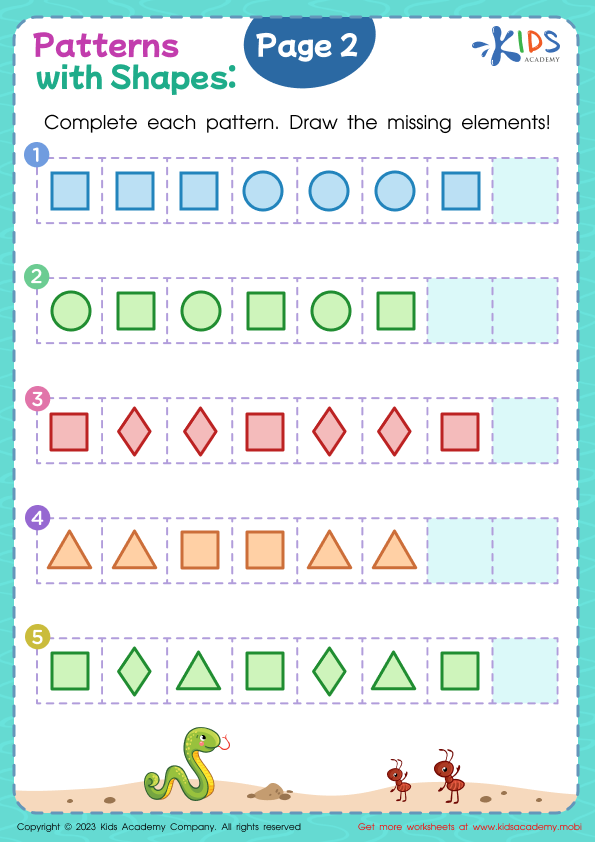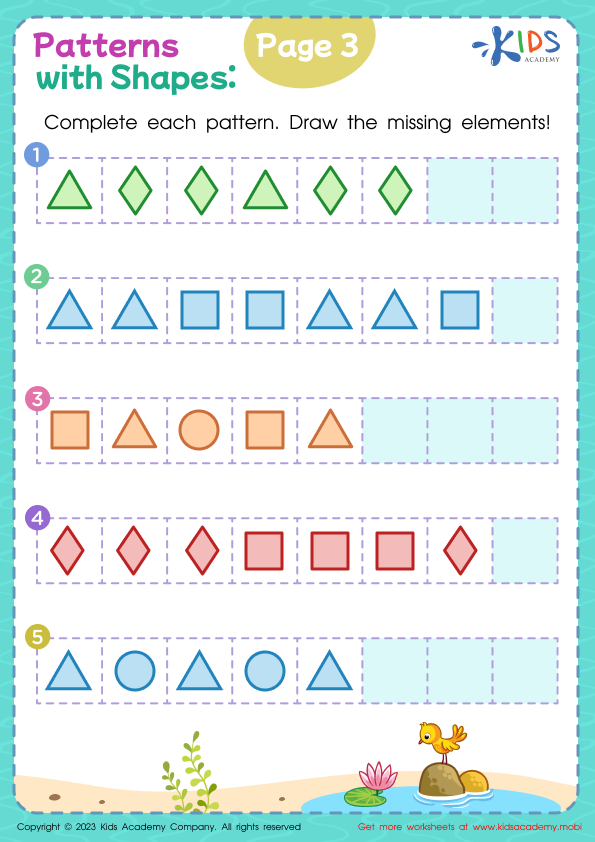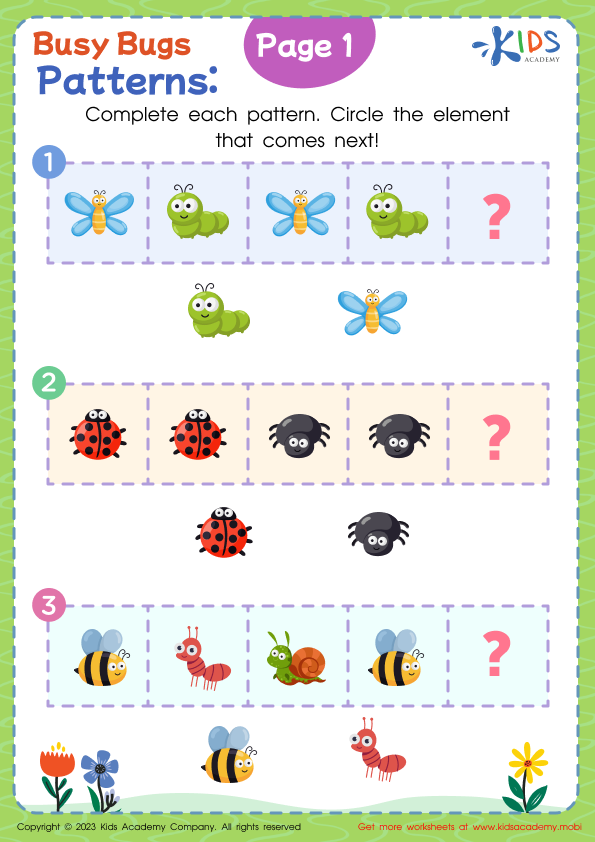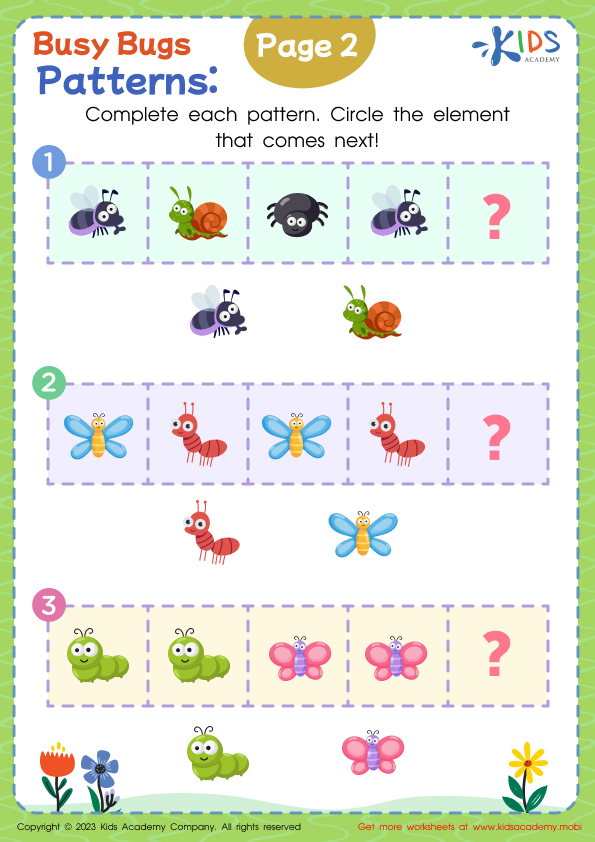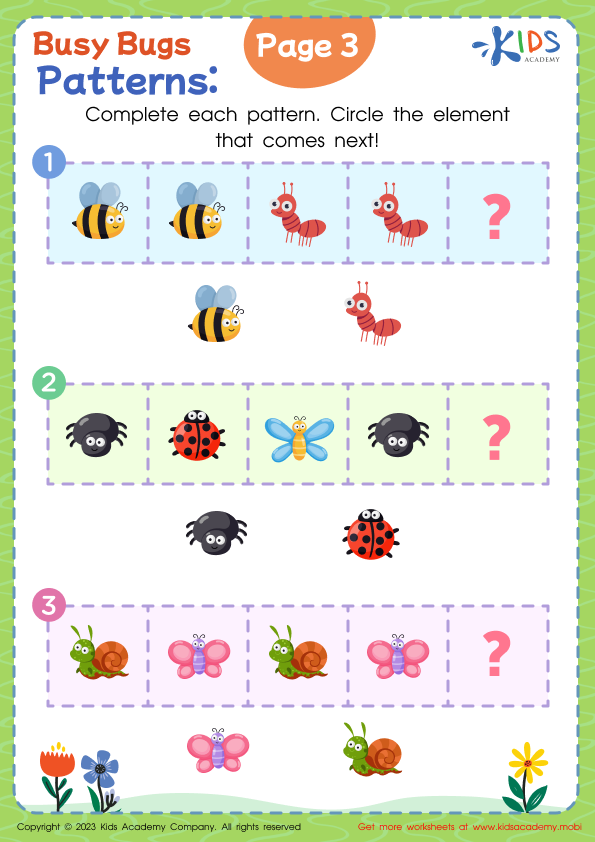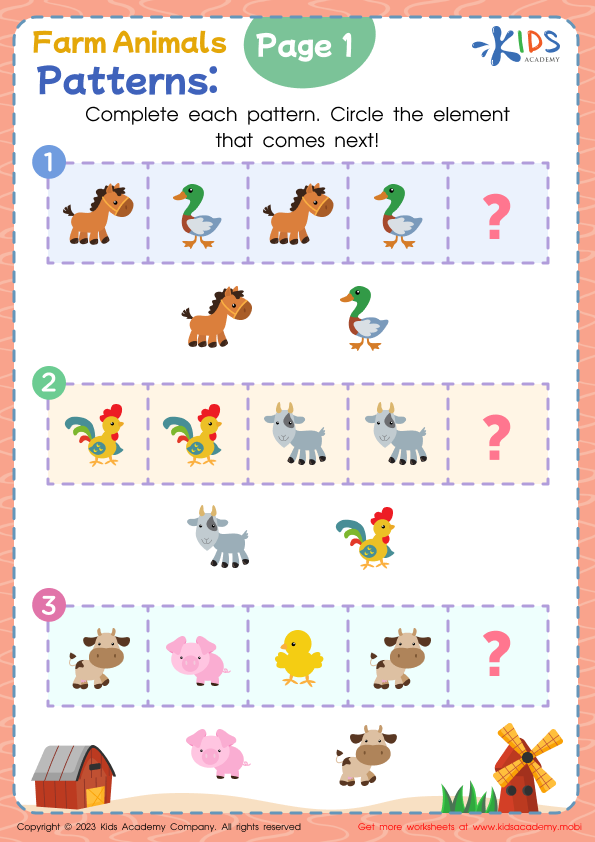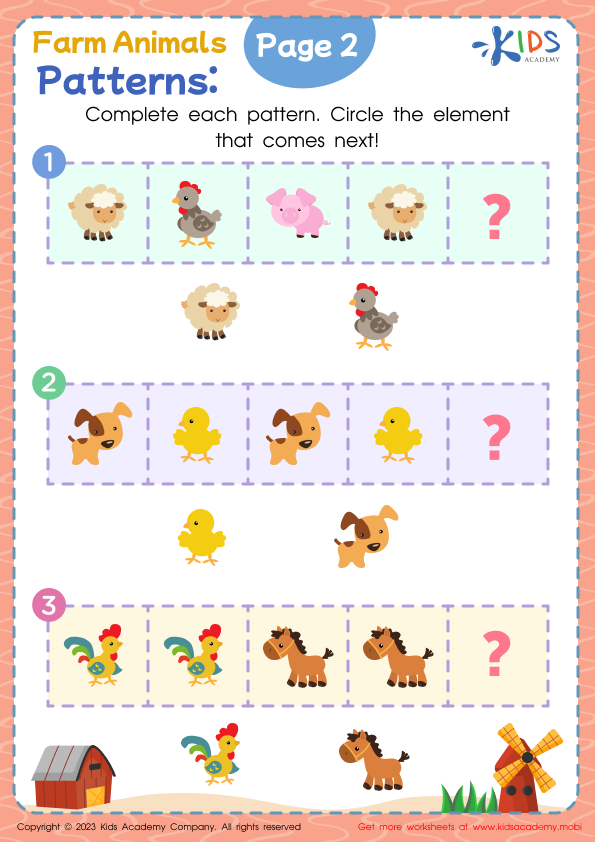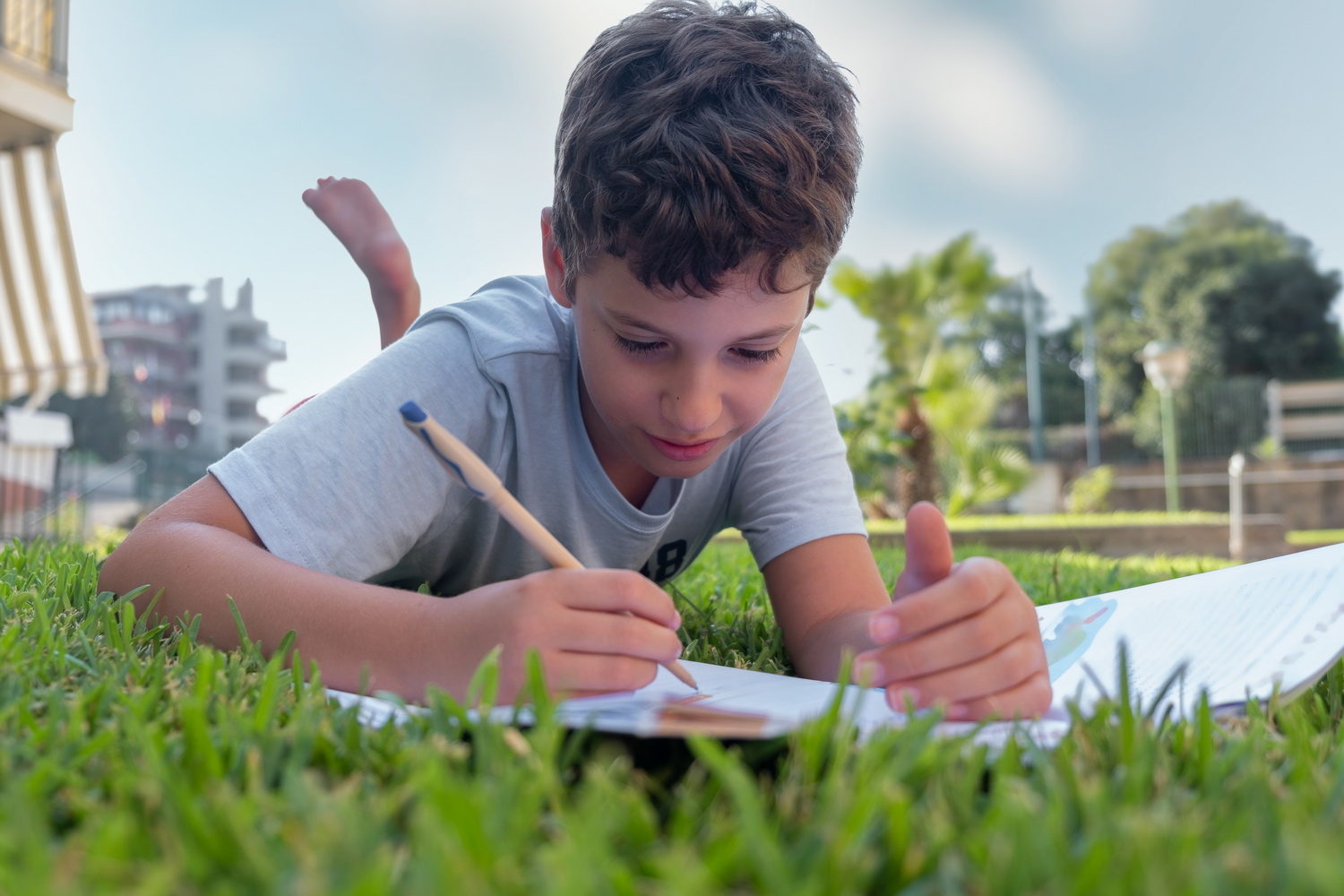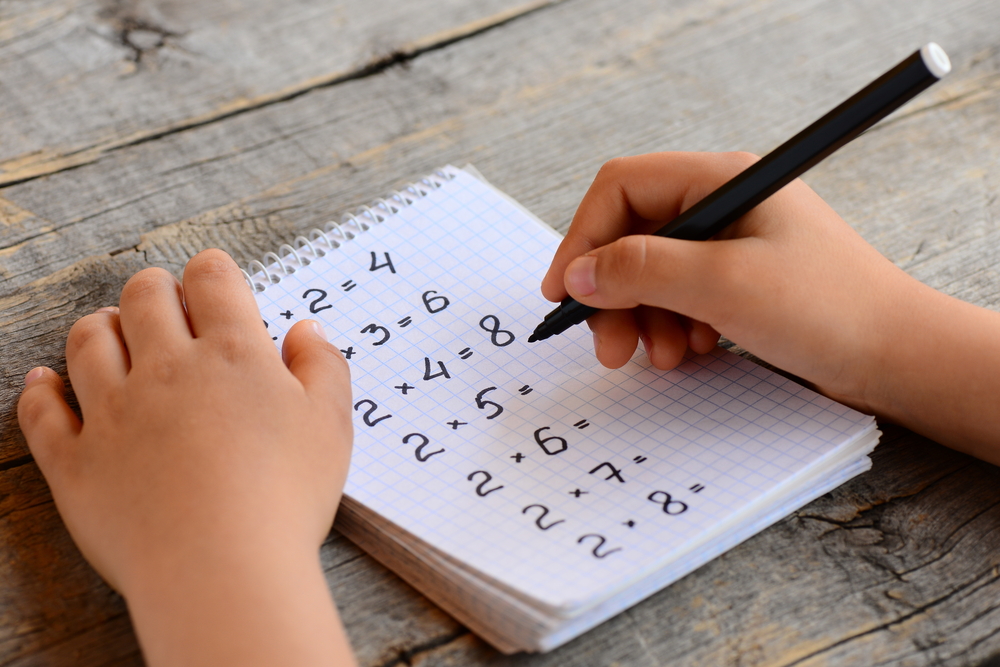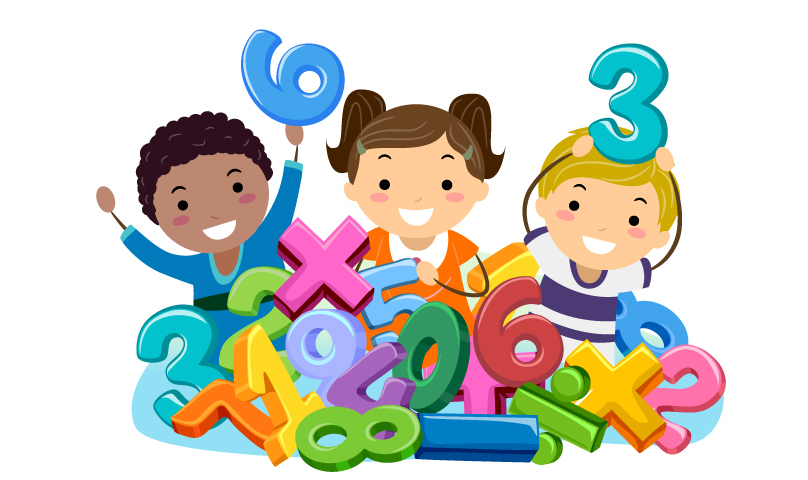Patterns Worksheets for Ages 3-6
21 filtered results
-
From - To
Discover engaging Patterns Worksheets designed for ages 3-6 at Kids Academy! Our fun, interactive activities help young learners understand and recognize patterns in a playful way. From simple sequences to more complex designs, each worksheet fosters critical thinking, problem-solving, and fine motor skills. These colorful worksheets are perfect for at-home learning or classroom activities. Encourage your child to explore shapes, colors, and rhythms with our extensive collection, ensuring a solid foundation in early math concepts. Visit Kids Academy today and jumpstart your child's mathematical journey with our expertly crafted pattern worksheets!
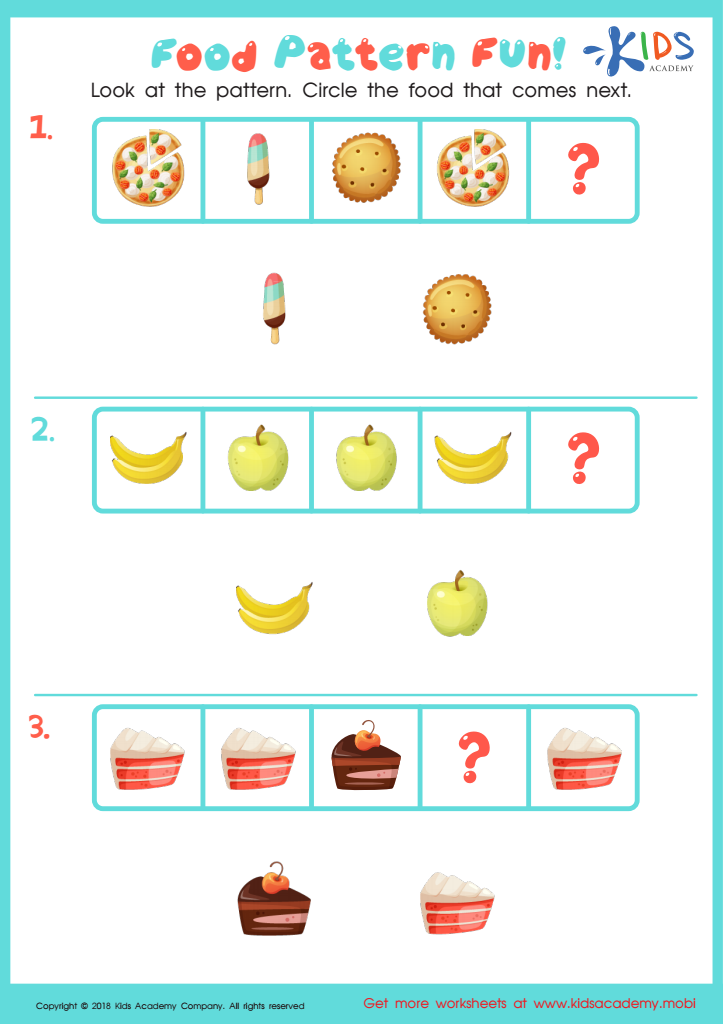

Food Pattern Fun Worksheet
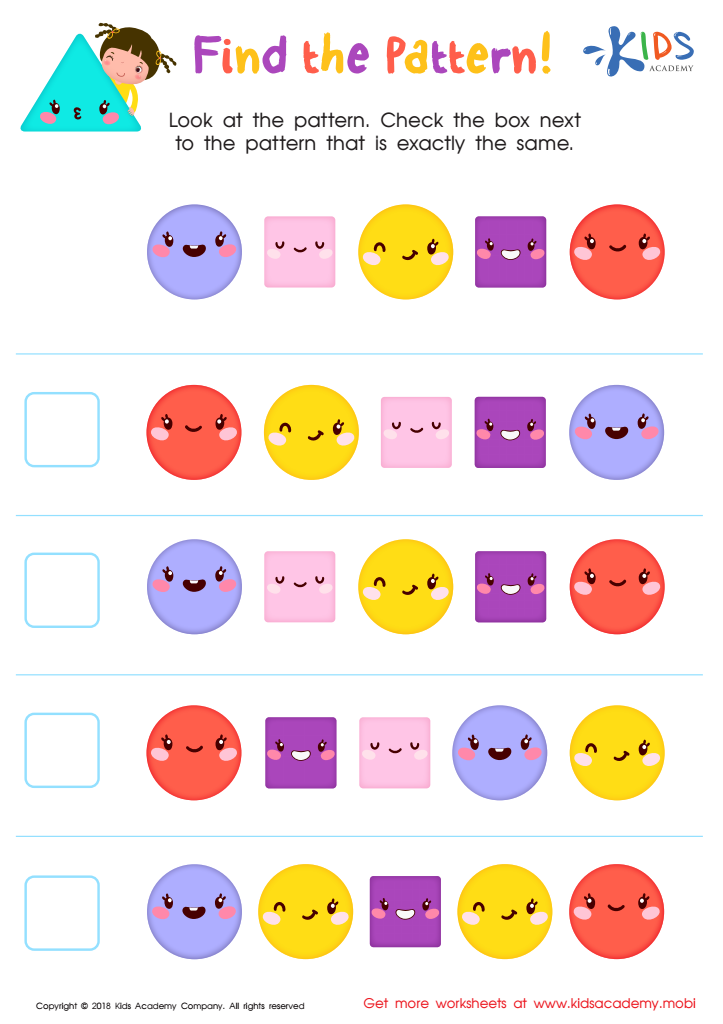

Find the Pattern Worksheet
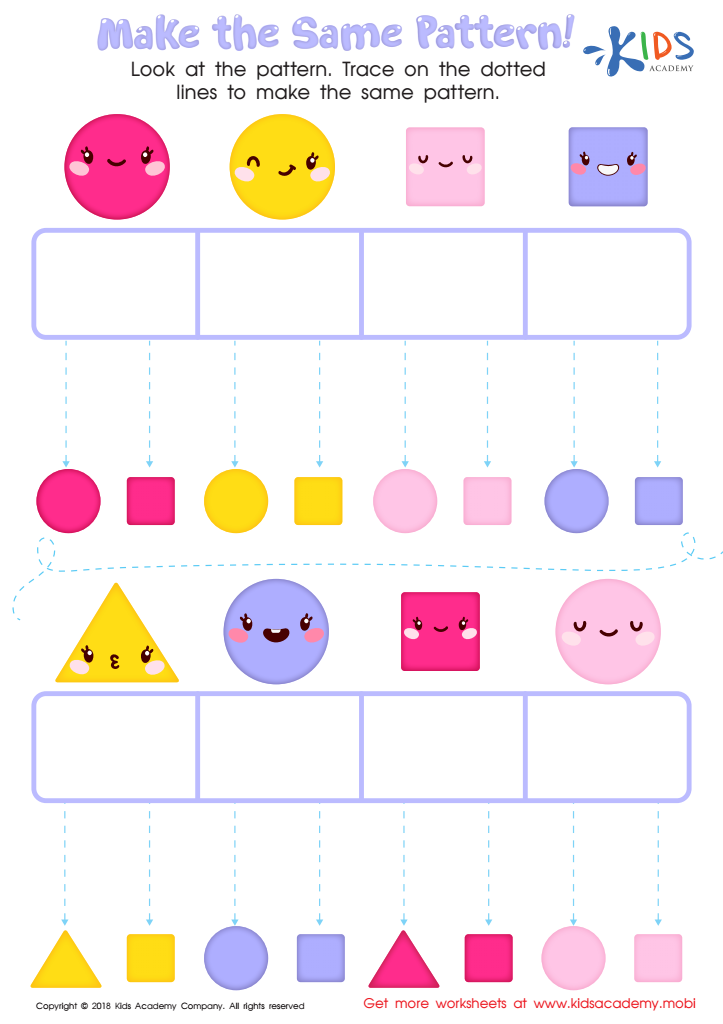

Make the Same Pattern Worksheet
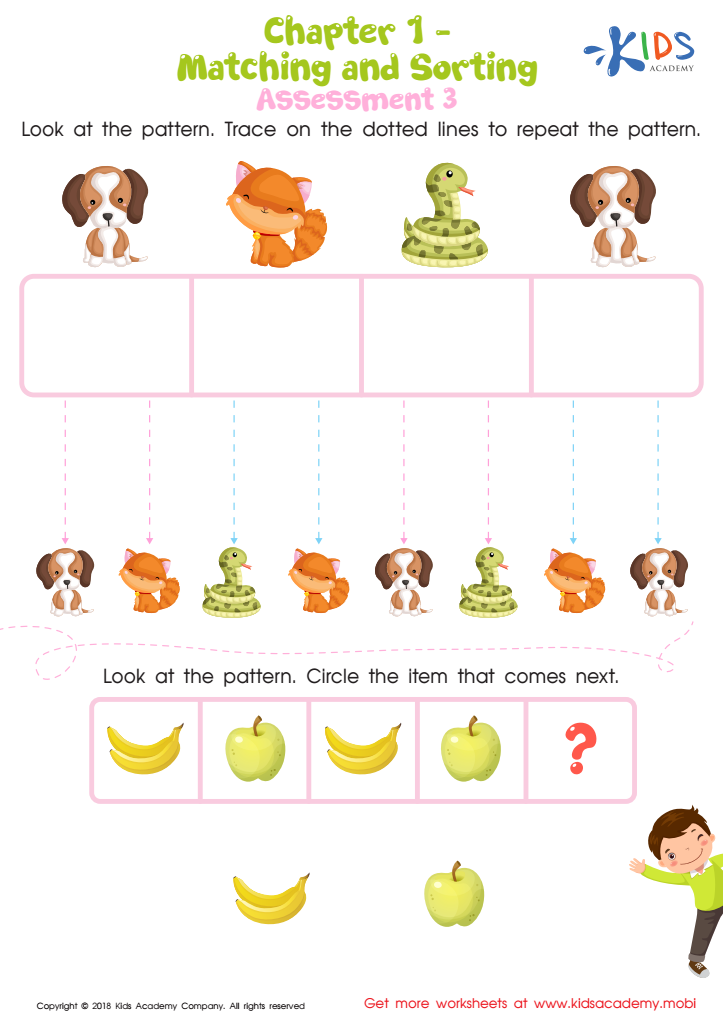

Matching and Sorting for Preschool: Assessment 3 Worksheet
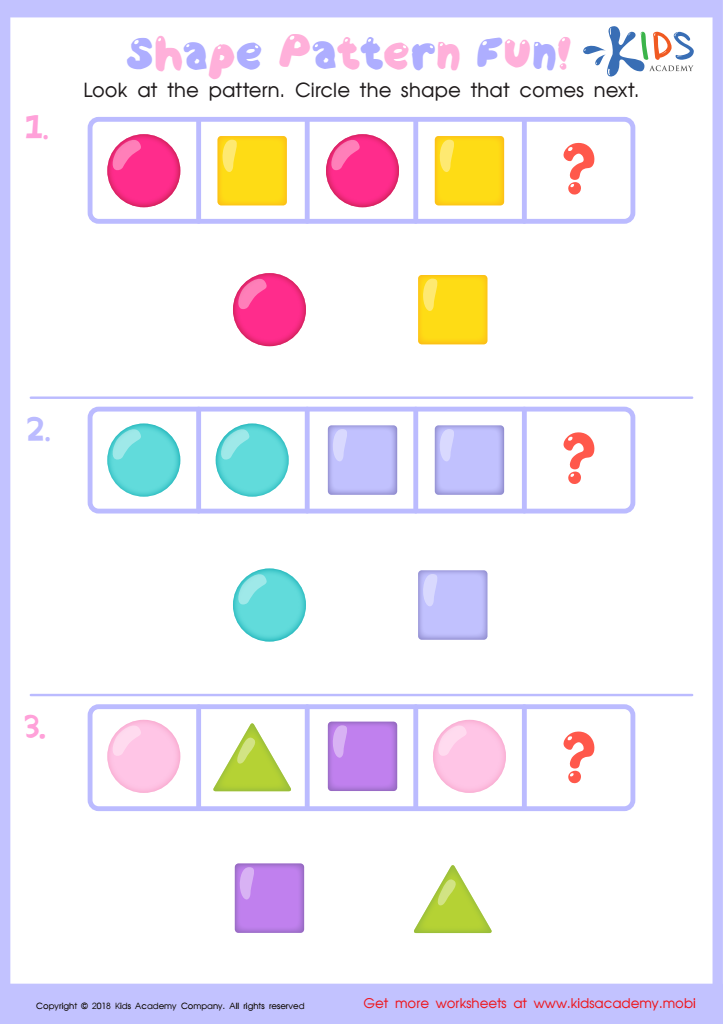

Shape Pattern Fun Worksheet
Patterns are fundamental to early childhood development, making recognizing and creating them vital skills for children aged 3-6. Parents and teachers play a crucial role in nurturing these abilities, which lay the groundwork for later learning, particularly in subjects like math and reading.
Understanding patterns helps children develop critical thinking and problem-solving skills. For instance, identifying sequences (like ABAB or ABCABC) improves their ability to predict what comes next. This trains their minds to recognize order and anticipate outcomes, skills valuable in more complex mathematical concepts.
Furthermore, patterns are omnipresent in nature, art, music, and daily routines, highlighting their importance across various contexts. When children notice and recreate patterns, they boost their observational skills and creativity. This encourages them to explore their environment more thoroughly and fosters a sense of curiosity.
From an academic perspective, recognizing patterns aids literacy development. Pattern recognition helps youngsters understand rhymes, rhythms, and sentence structures—vital components of language learning. For instance, recognizing repetitive sounds or letter sequences lays the foundation for reading and spelling.
Incorporating pattern activities into daily routines can also make learning fun and engaging. Through games, songs, and crafts, children can playfully enhance their cognitive skills, making education an enjoyable experience. This not only promotes better learning outcomes but also strengthens the bond between parents, teachers, and children.

 Assign to My Students
Assign to My Students
